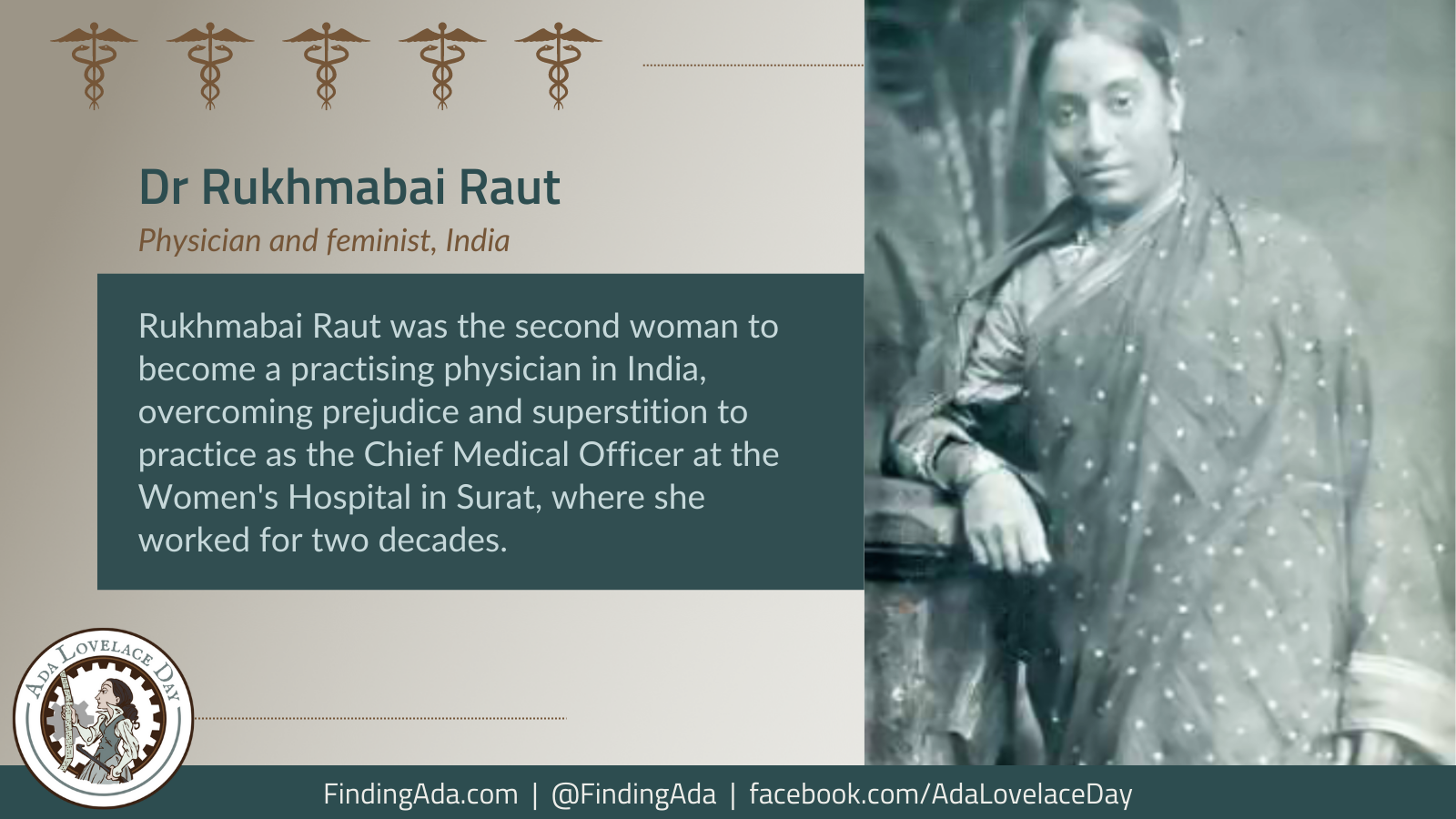
Dr Rukhmabai Raut
Rukhmabai Raut was the second woman to become a practising physician in India.
Born in 1864 in South Bombay, India, Rukhmabai’s father died when she was two years old. Six years later, her mother, Jayantibai Save, married Sakharam Arjun Raut, a respected physician and social activist in Mumbai who educated his step-daughter at home and encouraged her ambition to study medicine.
Rukhmabai Raut was married to a 19 year old man when she was 11 years old, an arrangement which she and her family resisted despite the fact that it was Hindu custom. She continued to live at home and her husband ignored her until 1885 when, perhaps interested in her dowry, he sought “restitution of conjugal rights”. After years of legal battles, he relinquished his claim over her, accepting instead a payment of 2,000 rupees. Her case was widely covered in India and Europe, provoking an intense debate about social reform and the age of consent in British India, which was eventually raised from 10 to 12 in 1891.
Raut’s legal battles drew her to the attention of many suffrage activists and she was supported by several to continue her education. In 1889, she sailed to England to study medicine at the Royal Free Hospital and then the London School of Medicine for Women. She became a Doctor of Medicine in 1894, eight years after Dr Kadambini Ganguly and Dr Anandibai Joshi. Joshi died of tuberculosis shortly after graduating, so Raut was the second practising female doctor after Ganguly.
Although Raut could have stayed and worked in the UK, she chose to return to India where women had little, if any, access to healthcare. She was not welcomed with open arms, being branded a witch by many, and attacked by upper-caste Hindu conservatives.
In 1895, she became the Chief Medical Officer at the Women’s Hospital in Surat, but when the hospital opened there were no patients as people thought that hospitals were only for those who were dying. She faced an uphill struggle to convince her community that medicine was safe and effective, but worked at the hospital for two decades.
In 1918, she took on a role at the Zenana (Woman’s) State Hospital in Rajkot, where she also established the Red Cross Society. She retired to Bombay in 1929 and died in 1955, aged 90.
Further Reading
- Rukhmabai, Wikipedia
- Rukhmabai Raut, one of India’s first female practising doctors, gets a big screen biopic, Neerja Deodhar, First Post, 19 August 2017
- Dr. Rukhmabai Raut: The 19th Century Child Bride Who Fought To Become A Doctor, Ramya Iyer, Women’s Web, 22 November 2017
- Rukhmabai Raut’s 153rd Birthday, Google Doodle, 22 November 2017
- This book recovers the stories of India’s first women doctors, often ignored by history, Kavitha Rao, Scroll.In, 2 July 2021
- Rukhmabai Raut: India’s First Female Practicing Doctor and the Harbinger of Age of Consent Act, Prerana Thakur, Pratha, 17 June 2022